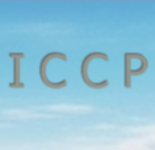Oral session:
| S11.1 Secondary Ice Multiplication – current state of the science and recommendations for the future Paul Field*1,2, Alan Blyth4, Tom Choularton3, Paul Connolly3, Brown Phil1, Paul Lawson5, Sonia Lasher-Trapp6, Gary LLoyd3, Annette Miltenberger2, Dmitri Moisseev7, Athanasios Nenes8, Chris Westbrook9 1Met Office, UK, 2ICAS, Univ of Leeds, UK, 3Manchester University, UK, 4NCAS, Univ iof Leeds, UK, 5SPEC inc., USA, 6University of Illinois, USA, 7University of Helsinki, Finland, 8Georgia Institute of Technology, USA, 9University of Reading, UK (video; position 0:00) |
| S11.2 Production of secondary ice particles and splintering of freezing droplets as a potential mechanism of ice multiplication Alexei Kiselev*1, Annika Lauber1, Patricia Handmann1, Thomas Pander1, Thomas Leisner1,2 1Karlsruhe Institute of Technology, Institute of Meteorology and Climate Research, Germany, 2Heidelberg University, Institute of Environmental Physics, Germany (video; position 17:00) |
| S11.3 Sticking Efficiencies and Multiplication by Fragmentation in Ice-Ice Collisions Vaughan Phillips Lund University, Sweden |
| S11.4 Observed and simulated cloud-top phase changes Corinna Hoose*1, Leopoldo Carro-Calvo1, Markus Karrer1, Sancho Salcedo-Sanz2, Martin Stengel3 1Karlsruhe Institute of Technology, Germany, 2Department of Signal Theory and Communications, Universidad de Alcalá, Spain, 3Deutscher Wetterdienst, Germany (video; position 0:00) |
| S11.5 Dual-polarization weather radar observations of secondary ice production regions Dmitry Moisseev*1,2, Annakaisa von Lerber2, Paul Field3,4 1University of Helsinki, Finland, 2Finnish Meteorological Institute, Finland, 3Met Office, UK, 4University of Leeds, UK (video; position 14:00) |
| S11.6 Microphysical analysis of a warm front using radar and in-situ data Stavros Keppas*, Jonathan Crosier, Keith Bower, Thomas Choularton University of Manchester, UK (video; position 28:00) |
| S11.7 On the importance of updraft speed and dwell time on the production of secondary ice based in convective clouds in southwest England Robert Jackson*1, Jeffrey French1, David Leon1, Sonia Lasher-Trapp2, Alan Blyth3 1University of Wyoming, USA, 2University of Illinois at Urbana-Champaign, USA, 3University of Leeds, UK (video; position 0:00) |
| S11.8 The Origin of Ice at a High-Alpine Site Gary Lloyd*, Thomas Choularton, Paul Connolly, Keith Bower, Michael Flynn, Robert Farrington, Martin Gallagher, Jonathan Crosier University of Manchester, UK (video; position14:00) |
| S11.9 Observation of orographic clouds at the high alpine site Jungfraujoch, Switzerland. Jan Henneberger*, Olga Henneberg, Alex Beck, Ulrike Lohmann ETH Zürich, Institute for Atmospheric and Climate Science, Switzerland (video; position 28:00) |
Poster session:
| P11.1 Highly Active Ice Particle Production in Hokuriku Winter Snow Clouds – Videosonde and HYVIS Observations Tsutomu Takahashi*1, Soichiro Sugimoto2 1Emeritus Prof. Kyushu Univ., Japan, 2CRIEPI, Japan |
| P11.2 Sensitivity of structure and polarimetric characteristic of a squall line to microphysical parameters Eyal Ilotoviz*1, Alexander Khain1, Vaughan Phillips2, Alexander Ryzhkov3, Jacob Shpund1 1The Hebrew University of Jerusalem, Israel, 2Lund University, Sweden, 3University of Oklahoma, USA |
| P11.3 Laboratory studies of the rime-splintering process. Andreas Tofaris*, Paul Connolly, James Dorsey University of Manchester, UK |
| P11.4 The role of submicron aerosol particles in the formation of high ice particle concentrations in mesoscale convective systems Luis Ladino*1, Alexei Korolev1, Ivan Heckman1, Mengistu Wolde2 1Environment and Climate Change Canada, Canada, 2National Research Council of Canada, Canada |
| P11.5 Comparative study of very efficient ice nucleating particles in contact and immersion freezing mode Nadine Hoffmann*1, Michael Koch1, Hanna Guggenberger1, Alexei Kiselev1, Thomas Leisner1,2 1Karlsruhe Institute of Technology, Institute of Meteorology and Climate Research, Germany, 2Heidelberg University, Institute of Environmental Physics, Germany |
